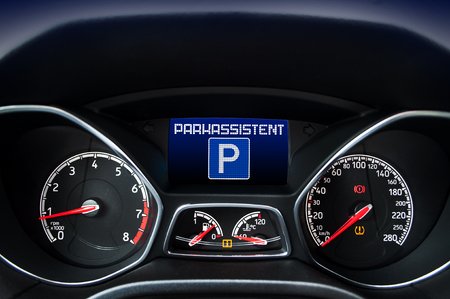1. Introduction to Over-the-Air (OTA) Updates
Over-the-Air (OTA) software updates have transformed how automakers deliver new features and improvements to modern vehicles. Instead of requiring a dealership visit, these updates enable car owners to receive the latest enhancements remotely, much like how smartphones update their software.
What Are OTA Updates?
OTA updates refer to wireless software installations that improve or modify a vehicle’s infotainment system, user interface, performance, and even certain driving functions. These updates are sent directly from the manufacturer to the vehicle over a network connection, eliminating the need for physical media or service center visits.
How OTA Updates Enhance Infotainment Systems
Modern infotainment systems rely on software to provide a seamless and dynamic user experience. OTA updates help keep these systems up to date by introducing new functions, fixing bugs, and refining performance. Here are some key benefits:
| Feature | Impact of OTA Updates |
|---|---|
| New App Integrations | Adds compatibility with the latest streaming services, navigation tools, and smartphone connectivity options. |
| Bug Fixes | Resolves known software glitches, improving stability and responsiveness. |
| Performance Enhancements | Optimizes system speed and usability, reducing lag and improving touch responsiveness. |
| UI/UX Improvements | Updates system design, menu navigation, and overall user interface for better accessibility. |
Why OTA Updates Matter
As vehicles become more connected, software plays a vital role in user experience and functionality. Infotainment systems manage everything from media playback to navigation, and OTA updates ensure that these features remain efficient and up to date. By receiving updates wirelessly, car owners can enjoy the latest technology without disruption.
2. How OTA Updates Work
Over-the-air (OTA) updates allow automakers to deliver software upgrades to your vehicles infotainment system without needing a visit to the dealership. These updates improve system performance, add new features, and fix bugs—all wirelessly.
How the Update Process Works
When your vehicle is eligible for an update, the system typically follows these steps:
1. Notification of an Available Update
Your vehicles infotainment system will alert you that a new update is available. This notification may appear on the touchscreen or through a mobile app linked to your car.
2. Downloading the Update
The update is downloaded using one of the following methods:
| Connection Type | Usage |
|---|---|
| Wi-Fi | Faster and recommended for larger updates |
| Cellular Data | Used when Wi-Fi isn’t available (may have data limits) |
| USB (Manual) | Some manufacturers allow updates via a USB drive |
3. Installing the Update
Once the download is complete, the system will prompt you to install the update. Some updates can be installed while driving, but others require your vehicle to be parked with the engine off.
4. System Reboot
After installation, the infotainment system may reboot to finalize the update. This can take a few minutes, depending on the complexity of the update.
Things to Keep in Mind
- Ensure a stable internet connection for a smooth download.
- Some updates may take longer and require waiting until your car is parked.
- Check for manufacturer-specific guidelines regarding updates.
Understanding how OTA updates work helps you keep your infotainment system running smoothly with the latest features and improvements.
![]()
3. Benefits of OTA Infotainment System Updates
Over-the-air (OTA) updates bring a range of benefits to your vehicle’s infotainment system. These updates allow automakers to enhance features, improve security, and fix software bugs—all without requiring a visit to the dealership. Here’s how OTA updates improve your driving experience:
Enhanced Features
With OTA updates, automakers can introduce new functionalities to your infotainment system, improving both convenience and entertainment. These updates may include:
- New app integrations
- Improved voice recognition
- Better navigation systems with real-time traffic updates
- Customizable user interfaces
- Wireless smartphone connectivity enhancements
By continuously improving these features, your car stays modern and relevant even years after purchase.
Improved Security
Cybersecurity is an important aspect of any connected technology, including your car’s infotainment system. OTA updates ensure that your vehicle receives the latest security patches to protect against potential threats. Key security enhancements include:
- Fixing vulnerabilities that hackers could exploit
- Encryption upgrades to secure personal data
- Authentication improvements to prevent unauthorized access
By maintaining up-to-date security measures, OTA updates help keep your personal information and vehicle protected.
Bug Fixes
Just like smartphones and computers, infotainment systems may experience software glitches. OTA updates provide a convenient way to resolve these issues without needing a technician. Common bug fixes include:
- Resolving system crashes and freezes
- Improving Bluetooth and Wi-Fi connectivity
- Fixing audio lag or distortions
- Enhancing touchscreen responsiveness
This ensures a smoother and more user-friendly infotainment experience.
Comparison of Traditional vs. OTA Updates
Here’s a quick comparison of traditional infotainment updates versus OTA updates:
| Update Method | Traditional (Dealership) | OTA Updates |
|---|---|---|
| Convenience | Requires a trip to the dealership | Automatic, done remotely |
| Time Required | May take hours or days | Usually completed within minutes |
| Cost | Potential labor fees | Typically free from the manufacturer |
| Availability | Limited to business hours | Available anytime, anywhere |
OTA updates make it easier than ever to keep your infotainment system updated and optimized. Whether it’s new features, security enhancements, or bug fixes, these updates ensure youre always getting the best experience from your vehicle’s technology.
4. Challenges and Limitations
While over-the-air (OTA) software updates make it easy to improve your vehicles infotainment system, they also come with challenges. Lets take a look at some common issues that can arise.
Connectivity Requirements
OTA updates rely on a stable internet connection. If your car doesn’t have a strong Wi-Fi or cellular signal, the update may fail or take a long time to complete. In some cases, manufacturers allow updates to be downloaded via home Wi-Fi and installed later while the car is parked.
Data Usage Concerns
Many OTA updates require large amounts of data. If your car uses a cellular network for downloads, updates might consume a significant portion of your data plan. Here’s a quick comparison:
| Update Type | Typical Size | Connection Recommended |
|---|---|---|
| Minor Bug Fixes | 50MB – 200MB | Cellular or Wi-Fi |
| Feature Enhancements | 200MB – 1GB | Wi-Fi Preferred |
| Major System Update | 1GB or more | Wi-Fi Required |
Update Failures
Sometimes, OTA updates fail due to power loss, connectivity drops, or software conflicts. If an update stops midway, it can leave your system in an unusable state. To avoid this, manufacturers often design fail-safe mechanisms such as:
- Rollback Features: The system can restore the previous version if an update fails.
- Partial Downloads: Updates resume from where they left off instead of starting over.
- Scheduled Installs: Users can install updates when parked to prevent disruption.
Final Thoughts
OTA updates are convenient, but they require a stable connection, sufficient data, and careful execution. Being aware of these challenges can help ensure a smoother update process for your infotainment system.
5. Future of OTA Updates in Vehicles
Looking ahead, over-the-air (OTA) update technology is poised to revolutionize the automotive industry even further. As vehicles become more software-driven, the ability to update infotainment systems, safety features, and even vehicle performance without visiting a dealership will continue to expand.
Advancements in OTA Technology
Manufacturers are already working on enhancing OTA capabilities to go beyond infotainment updates. In the future, we can expect improvements in:
- Performance Enhancements: Automakers could fine-tune engine efficiency, battery management, and even suspension settings remotely.
- Autonomous Driving Upgrades: Self-driving technology can be improved without requiring hardware changes, making vehicles smarter over time.
- Security Patches: Rapid response to cyber threats will be crucial as cars become more connected.
- User Experience Enhancements: Updated user interfaces, new apps, and improved navigation tools can be delivered effortlessly.
Implications for the Automotive Industry
OTA updates are shifting how automakers interact with customers and manage vehicles post-sale. Some key changes include:
| Aspect | Impact of OTA Updates |
|---|---|
| Reduced Service Visits | Fewer physical trips to dealerships for software-related fixes and updates. |
| Revenue Opportunities | Manufacturers can offer premium software features through paid updates. |
| Longer Vehicle Lifespan | Regular updates help cars stay modern without requiring hardware replacements. |
| Increased Vehicle Personalization | Drivers could customize and upgrade software according to their preferences. |
Challenges and Considerations
While the future of OTA updates is promising, there are challenges to address:
- Cybersecurity: Protecting vehicles from hacking attempts will be more critical than ever.
- Data Privacy: Automakers must ensure that customer data remains secure and not misused.
- Hardware Limitations: Older vehicle models may not support the latest software updates.
- Connectivity Issues: Reliable internet access is necessary to ensure smooth updates.
Conclusion
As OTA update technology continues to evolve, it will shape the future of the automotive industry by bringing more convenience, safety, and efficiency to both automakers and drivers. This innovation is not just about keeping vehicles up to date—it’s about transforming the entire driving experience.


